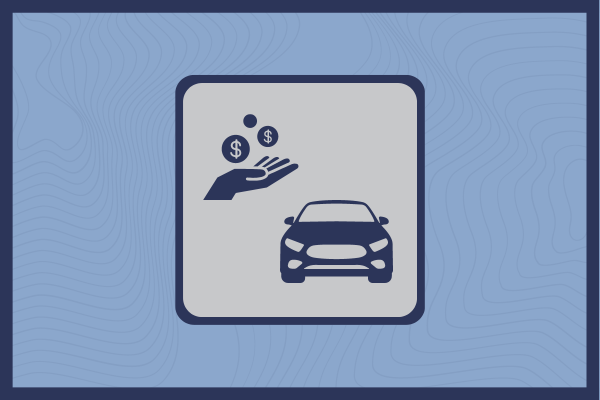
Premium | 11 Influential Factors that Determine Your Payment
If you have a car, then chances are you probably pay an insurance premium each month, each year, or somewhere in between. Have you ever wondered how insurance companies determine this number? In general, insurance companies consider two things when determining your car insurance payment: the risk of the driver and the risk of the vehicle. These companies use different tools and resources to cross reference information to give you one comprehensive rate based on their risk assessment. There are many different variables involved and each insurance carrier does it a little differently, but here are 11 different factors that are commonly used in determining your premium.

1. Driving Record
Having a bad driving record, such as speeding tickets, DUIs, and other traffic violations heavily influence on your car insurance payment. Insurance companies see these kind of things and determine these drivers as high risk. In the world of insurance, high risk equals more expensive. Safe driving not only pays off by keeping yourself and other drivers safe, but it will save you money over the years.
2. Claims History
Your claims history is one of the leading factors in determining your car insurance premium. Two variables that insurance carriers look at with your claims history are the frequency and the size of the claims.
Claim Frequency
This refers to how often you report claims. Insurance companies don’t like to see a lot of little claims, and you can expect your rates to rise if you file a claim for every little thing. For this reason, it is sometimes better to pay out of pocket to fix small, inexpensive repairs even if it is higher than your deductible.
For example, let’s say you have a $500 deductible for damage other than collision. You park your car and run into the store, and when you come out there is a . Let’s say that you received a quote for $750 to get it fixed. In this instance it is probably better to pay the $750 out of pocket than to get your insurance company involved. Sure, you will save $250 this time, but in the long run your premium will increase, ultimately costing you more. If you have a lot of little claims like this you can expect your premium to increase over time. That is why it is the best practice to reserve your insurance for larger issues.
Claim Size
The other variable commonly looked at to determine your premium is the size of the claims you have had. If you have been involved in 3 accidents in the last five years you can expect your payment to go up. Most insurance carriers look at your claims history going back 3 to 5 years.
3. Age & Gender
The age and the gender of the driver also play a factor in your premium. Statistics show that older drivers with more experience have less accidents than younger drivers with less experience. As a rule of thumb, 25 years old is typically the threshold where insurance carriers begin to see drivers as more responsible and less of a risk. Obviously, this is dependent on their driving history and what claims have been reported.
4. Vehicle Type
The type of vehicle you drive plays a part in what your car insurance payment will be. Generally speaking, the more “boring” the car is the cheaper it will be to insure. Conversely, the more “exciting” the car is the more expensive it will be to insure.
For example, the premium for a base model Toyota sedan will be cheaper than the premium for a Porsche. The reasoning behind this is that the Porsche is more likely to be used in a riskier manner – speeding, dodging in and out of cars, drifting, etc. The Toyota is seen as a lower risk because it is less capable and therefore less likely to be doing these things.
5. Vehicle Usage
The way and how much you use your car also influences insurance premiums. Someone who drives 5000 miles a year has less time on the road and therefore less risk exposure than someone who drives 30,000 miles a year. Generally speaking, insurance companies base your premium off of your likelihood of having a loss. The lower the chance of a loss, the lower the premium will be.
6. Repair Costs
Insurance companies look at what the cost to repair the vehicle is. This is factored into your premium because if you are in an accident, how much is it going to cost to repair the damage? Once again, the lower the repair costs the lower the premium. Going back to the Toyota and Porsche example, the Porsche is going to be considerably more to fix than a Toyota if they had the exact same damage.
7. Credit Score
Insurance companies take a look at the driver’s credit history to determine premium. They’ve determined that people with a lower credit score are more likely to have losses or not pay their premium. Usually it doesn’t impact your premium too much unless you have a very low credit score. Also, it is the insurance companies discretion if they use credit scores, so not all carriers do. In Washington State, a ban on using credit scores was overturned on August 29, 2022, allowing insurance companies to use credit again.
8. Coverage Amount
The more coverage you have the more your premium will be. This is because the insurance company is taking on more risk as they are agreeing to cover more things. While having the state minimum required limits may reward you with a cheaper premium, it is usually not the best practice to opt for this. This is because if you were involved in a large accident, you may be left to pay out of pocket for damages if the damages exceed your policy limits. Saving a few bucks a month on your premium could cause you financial hardship down the road due to not having enough coverage.
9. Coverage History
Coverage history is referring to the insurance that you have carried over the years. Have you had any gaps in coverage? Cancellations for nonpayment of premium? If so, this will negatively reflect on your insurance premium. Insurance companies like to see a history of steady coverage and steady, on-time payments.
10. Deductible Amount
The deductible amount and the premium have an inverse relationship. This means that the higher the deductible the lower the premium. Alternatively, the lower the deductible the higher the premium. A higher deductible lessens the frequency of small claims, which insurance companies find preferable.
11. Premium Discounts
Most insurance companies offer discounts on your premium for a range of different things. These discounts could be for things like safe driving, bundling multiple lines of coverage (such home and auto insurance), and being a loyal customer. People who have been with the same carrier for years usually are rewarded with some sort of a discount off their premium.
12. Location
Lastly, location is one of the largest factors in determining your premium. Someone who lives in a small, rural, safe town is likely to see lower premiums than someone living downtown in a large city.
For example, let’s say you live in downtown Seattle and have to park in a public parking garage. With car theft, pedestrians walking across the road, bikers weaving in and out of cars and crazy drivers all over the road, chances are you are going to have a much higher chance of something going wrong than if you lived in Yakima. This is reflected in your insurance premium.
Conclusion
While everyone’s premium is unique based off of these variables, there is one thing every driver has in common: nobody likes paying it, yet we all have to. Because it is legally required, it is important to educate yourself on how it is calculated so that you are properly equipped to make the necessary changes in order to save yourself money on car insurance. Whether that is as drastic as relocating, or something as easy as setting reminders to pay your bills on time to raise your credit score, hopefully you found this post helpful in educating you about premiums. Click here to discover 10 ways that you can lower your car insurance premium.

